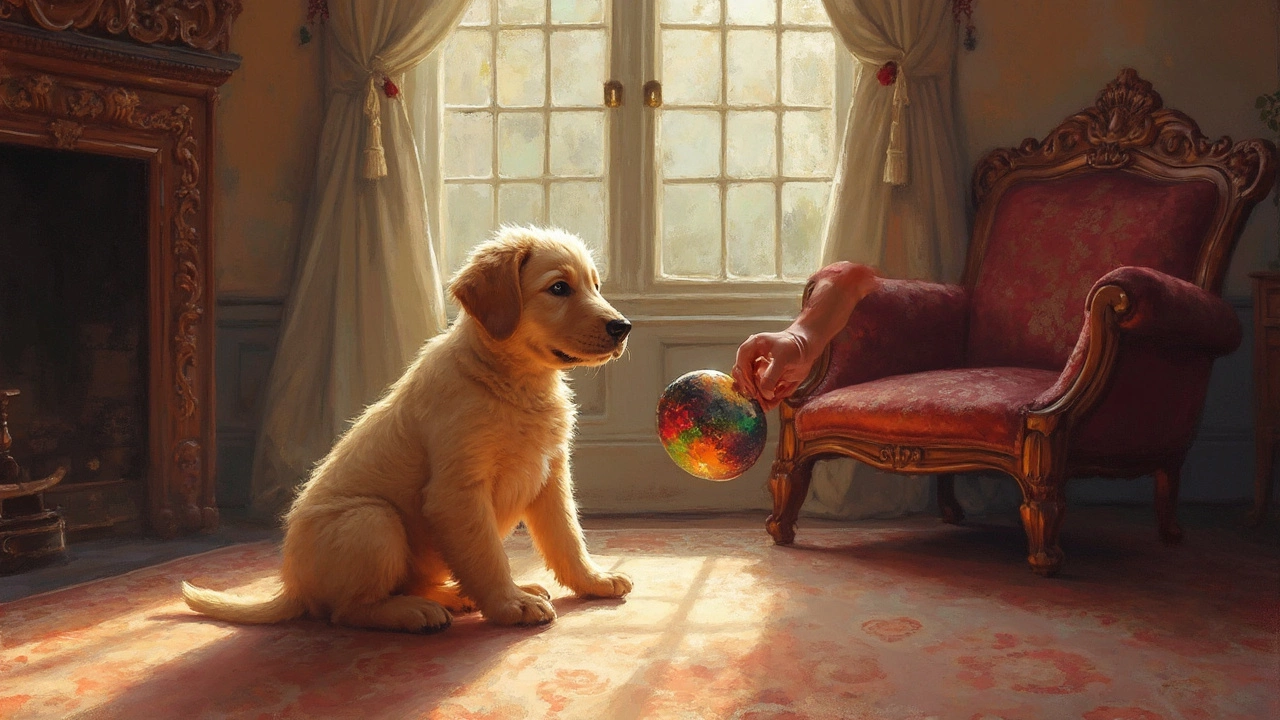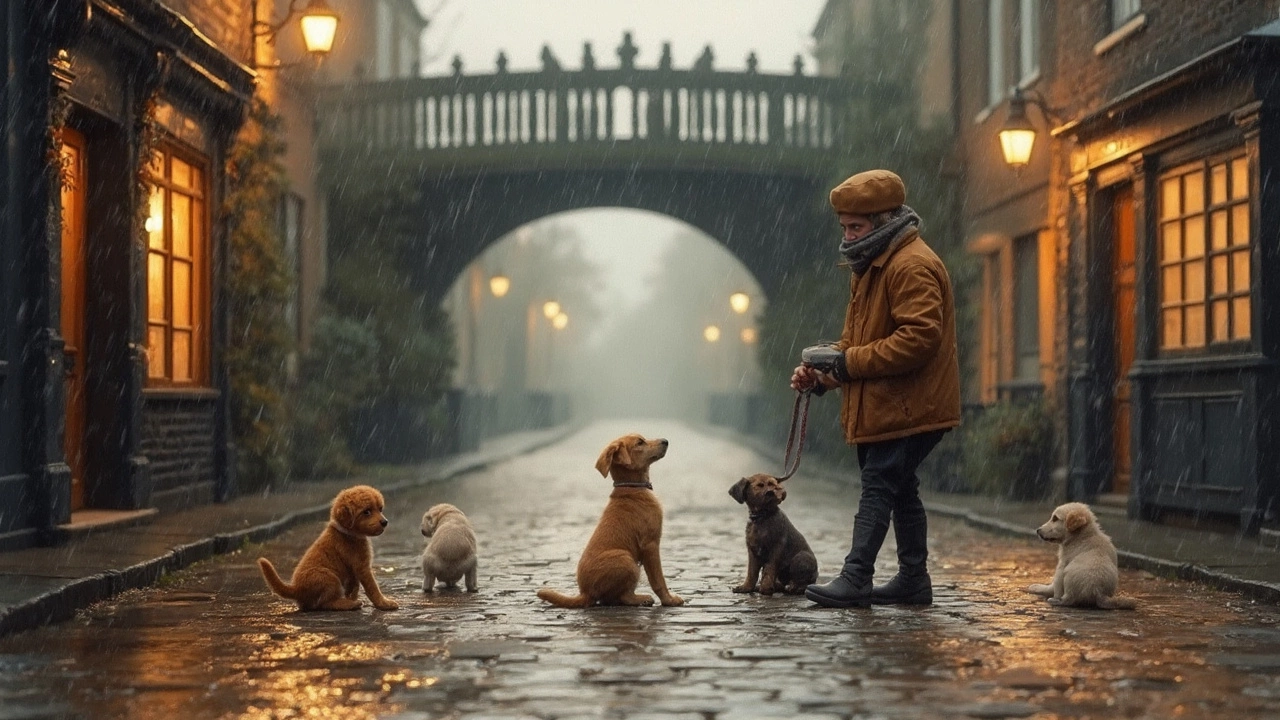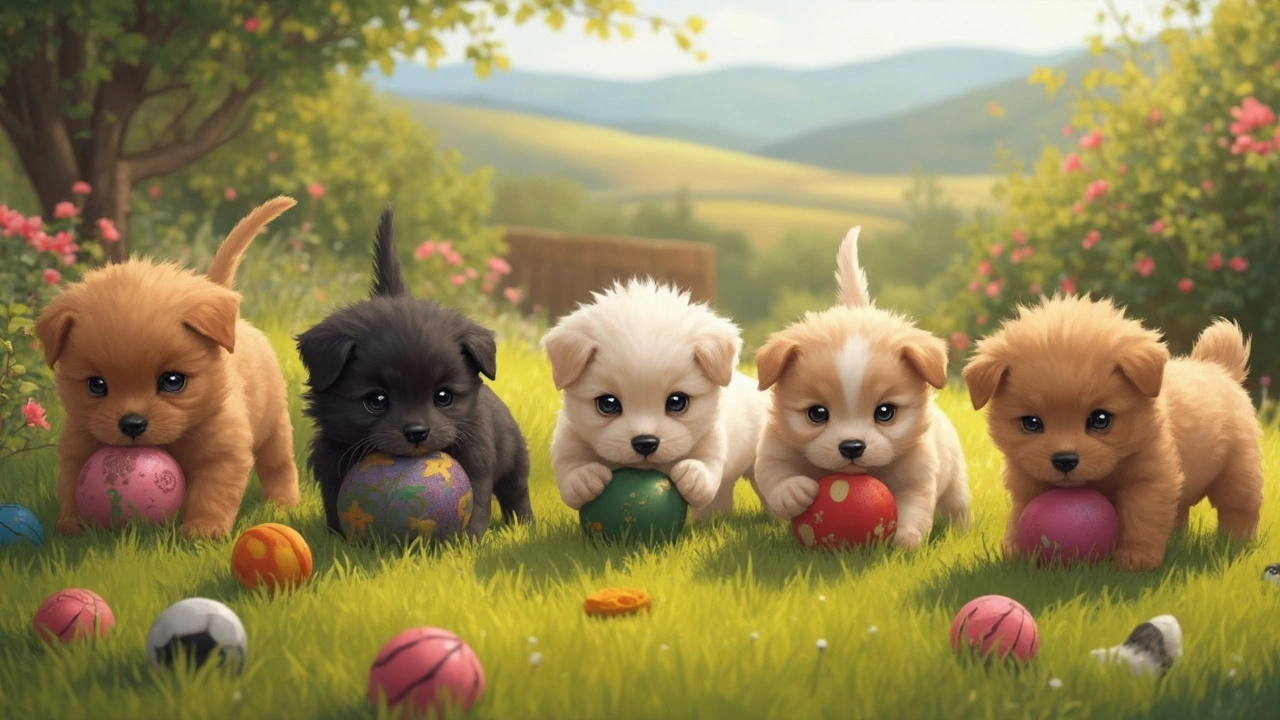Ever wondered when those adorable little furballs start doing what you ask? Well, puppies don’t come equipped with instant obedience. It's a gradual process tied to their age and development. So, if you've got a new pup and you're thinking of teaching them tricks, patience is key.
Typically, puppies start to pay attention and follow simple commands around the age of 8-12 weeks. Before this, they're still figuring out the world around them. But don't let the wait discourage you! This is actually a great time to introduce them to some basic commands using simple toys. Think of it as building blocks for a well-behaved doggy in the future.
- Understanding Puppy Development
- The Magic Age for Obedience
- Best Toys for Training
- Tips for Successful Training
- Common Mistakes to Avoid
Understanding Puppy Development
Puppies, much like human babies, go through unique stages of growth that impact how they learn and behave. Recognizing these stages can really help you handle their training more effectively.
During the first few weeks, they're blind and deaf, relying entirely on their mother. By about two weeks, their eyes start to open, giving them a chance to explore. Around the three-week mark, their ears perk up too. This is when the world becomes noisy and intriguing for them.
By the time they're about four weeks old, you'll notice them starting to walk, albeit a bit clumsily. They're testing their legs and getting a feel for their surroundings. This phase is crucial because they're beginning to socialize with their littermates and humans.
Come seven to eight weeks, many puppies are ready for their new homes. This age is vital for starting basic obedience training. Puppy obedience isn't about jumping straight to complicated commands. It's more about getting them comfortable with their own name, the word 'no,' and engaging with basic commands like 'sit' and 'stay'. Consistent, gentle practice is the way to go.
Each pup develops at its own pace, so while some might be quick learners, others might need a bit more time. Remember, it's not a race. During this time, using the right puppy toys can make learning fun and effective.
The Magic Age for Obedience
Believe it or not, puppies have a sweet spot when it comes to training. Most puppies start to genuinely listen and follow basic commands between 8 to 12 weeks old. This period is crucial because their brains are like little sponges, ready to soak up all sorts of new experiences. During this time, they can start grasping the foundations of obedience.
Why this age? Well, puppies are still blank slates at this point. They’re curious, eager, and not too set in their ways. It’s like teaching a toddler to say 'please' and 'thank you.' Around eight weeks, their senses are better developed, and they begin to take cues from you, their favorite human in the world.
What commands are we talking about here? Start simple! Commands like sit, stay, and come are perfect for this age. These basic commands form the groundwork for more complex instructions later. And it’s not just about the age; it’s about keeping things fun and rewarding for them, too.
Keep in mind, every puppy learns at its own pace. Some might catch on quickly; others might take a bit more time. The key is consistency and a whole lot of patience. You might find using puppy toys that squeak or make noise could grab their attention more effectively during training sessions.
Here’s a quick table to give you a snapshot of typical puppy milestones related to obedience:
| Age (Weeks) | Development/Behavior |
|---|---|
| 4-5 | Exploratory behavior begins |
| 8-10 | Basic command training can start |
| 12 | Reliable response to simple commands |
Every pup's journey is unique, so it’s essential to adapt your training style to what works best for them while ensuring a positive experience. This is just the beginning of a delightful adventure with your new companion!

Best Toys for Training
Toys can play a massive role in puppy training, making it not just effective but also super fun! The key is choosing toys that will keep your pup engaged while helping them learn obedience.
One of the best toys for puppy obedience is the classic rubber Kong toy. You can stuff it with treats or kibble. It not only encourages them to play but also teaches patience as they work to get to the goodies inside. Plus, it's nearly indestructible, which is a bonus for those enthusiastic chewers.
If you're introducing simple commands like 'fetch,' a standard tennis ball is your new best friend. They're ideal because most puppies love the bounce and chase—and, importantly, they're easy for young pups to carry. Want to make it easier to clean out the slobber? Go for a rubber ball with a hollow center.
Rope toys are fantastic for a game of tug-of-war. This not only helps with obedience interventions like 'drop it' or 'leave it' but also strengthens your bond with your pup. Look out for ones that are tough but safe, like cotton-blend ropes that won't fray too easily.
And for those tech-savvy pet parents, consider interactive toys like treat-dispensing puzzles. They can keep your puppy's brain busy while also teaching them how to solve problems—training both body and mind! Puppies learn by doing, and these toys guide them while also providing a bit of mental exercise.
Here's a quick look at some popular training toys and their uses:
| Toy | Use |
|---|---|
| Kong Toy | Encourages patience and chewing satisfaction |
| Tennis Ball | Great for fetch and recall commands |
| Rope Toy | Perfect for tug-of-war and 'drop it' training |
| Interactive Puzzles | Boosts brainpower and problem-solving |
Remember, using the right toys isn't just a tactic for training; it's a fantastic way to build a positive, trusting relationship with your pup. Make their learning journey fun and rewarding for both of you!
Tips for Successful Training
Training a puppy requires a bit of strategy and loads of patience. Here’s the good news: with the right approach, any pup can become obedient and well-behaved. Let's dive into what makes training successful, including some do’s and don’ts that might surprise you.
First off, keeping training sessions short and sweet is crucial. Puppies have the attention span of a toddler, so about 5-10 minutes tops is perfect. Frequent breaks and a fun vibe keep your pup engaged and prevent frustration for both of you.
Using puppy toys is a game-changer. They're not just about play. Toys can help maintain focus and serve as great rewards when a puppy gets it right. A squeaky toy or a tug rope can be way more exciting to your pup than just a typical treat.
- Consistency is key: Use the same commands and hand signals each time. This consistency helps your pup learn not just what to do, but when to do it.
- Positive reinforcement works wonders: Puppies respond really well to praise or a small treat when they follow a command correctly. Make a big deal out of successes.
- Timing is everything: Correct or praise your pup immediately following the behavior. They connect actions with consequences faster when the feedback is instant.
Also, keep in mind that your tone matters. Puppies are incredibly attuned to how we say things. Your voice should be positive and encouraging, not harsh or loud. This helps build trust, making your pup more willing to listen.
If your puppy isn’t catching on as quickly as you’d like, don’t sweat it. Each dog learns at their own pace, and what works for one might need a tweak for another. Remember, the goal is about building a bond while teaching them how to be a well-behaved member of the family.

Common Mistakes to Avoid
Training a new puppy can feel like a whirlwind. But even with the best intentions, common mistakes can sneak in and slow down your progress. Here are some blunders to watch out for:
- Inconsistent Commands: Using different words for the same command can confuse your pup. Stick with simple commands like 'sit,' 'stay,' or 'come,' and be consistent with everyone in the house using them too.
- Lack of Patience: Expecting too much too soon is a recipe for frustration. Puppies have short attention spans and need time to learn. Celebrate small victories instead of aiming for perfection right away.
- Reinforcing Bad Behavior: It's easy to unintentionally encourage the wrong actions. For example, if your puppy jumps up and you give them attention, they learn that this behavior gets rewarded. Always reward the behavior you want to see repeated.
- Skipping Socialization: Socializing isn't just about meeting people. It's also about exposing your puppy to different environments and other dogs. Skipping this can result in a shy or anxious dog later on. Make sure you're gradually introducing them to new experiences.
- Overuse of Treats: Treats are great motivators, but rely too much on them and your puppy might only listen when there's a snack involved. Balance treats with plenty of praise and affection so they learn to obey without expecting goodies every time.
Understanding these common slip-ups and steering clear of them can really smooth out your puppy training journey. Plus, keeping your training sessions positive and full of fun makes the experience enjoyable for both you and your new furry friend!
